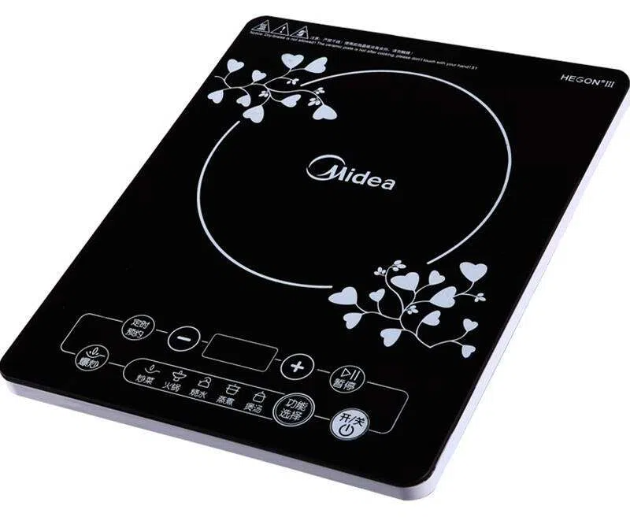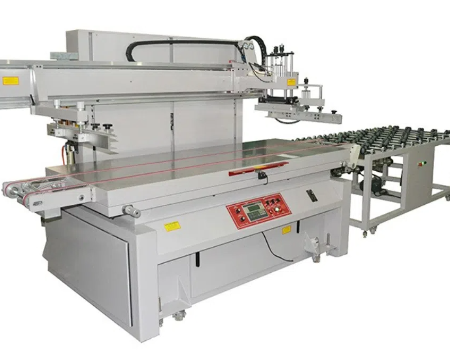
Home Appliance Panels:
Using screen printing technology, various operating patterns and logos are accurately printed on home appliance panels to enhance their functionality and aesthetics.
With the rapid development of the electronics industry, the manufacturing process of glass panels is also constantly innovated, screen printing as a traditional and effective printing technology, is widely used in the production of glass panels.


Using screen printing technology, various operating patterns and logos are accurately printed on home appliance panels to enhance their functionality and aesthetics.

Through screen printing technology, fine printed panels connect lines and signs to ensure the functionality and aesthetics of photovoltaic glass to meet the high efficiency needs of solar cells.

Using screen printing technology, decorative patterns and brand logos are accurately printed on bathroom glass to ensure its beautiful appearance and complete function, and meet the high-quality needs of bathroom products.

Using screen printing technology, the operation pattern and logo are finely printed on the film switch to ensure accurate response, reliable operation, and meet the high requirements of electronic equipment.
Screen printing technology can use a variety of inks, including oily, water-based, synthetic resin emulsion and other types, making the printing effect more colorful.
The screen printing plate is soft and has a certain elasticity. It is not only suitable for printing on soft items such as paper and cloth, but also suitable for printing on hard materials such as glass products.
The screen printing ink layer is thick and has strong coverage, which can form a significant printing effect.
Screen printing is not limited by the surface shape and area size of glass products. It can print curved and spherical glass products, which has great flexibility and applicability.
Compared with manual printing, screen printing has higher mass production efficiency and can meet the needs of large-scale production.
As a mature and reliable printing technology, glass panel printing provides an efficient, accurate and reliable solution for the display manufacturing industry, helping the glass panel manufacturing industry to achieve a higher level of development.
Home appliance glass printing refers to the use of glass materials in home appliances, such as the printing of stove glass panels, range hood glass, refrigerator door glass, oven door glass, washing machine panels, etc. These glass products usually need to be printed with various patterns, logos, text or decorations to enhance the appearance and functionality of the product. Glass printing for home appliances usually requires consideration of factors such as durability, clarity, and adaptability to the environment. Using TAOXING screen printing technology can achieve precise and lasting printing effects on home appliance glass, ensuring that the product's patterns are clear and non-fading during use, providing users with a good experience and aesthetics.
Taoxing Technology's screen printing machines provide key printing solutions for photovoltaic equipment manufacturers. From photovoltaic equipment components to solar panel markings, our screen printing equipment ensures accurate, precise screen printing of glass panels, ensuring products meet strict photovoltaic industry standards while delivering durability and clarity.
Utilize our photovoltaic glass printing technology to give solar products beautiful designs and superior performance, achieving the perfect combination of environmentally friendly energy and art.
The process flow of bathroom glass printing includes preparing glass plates, designing patterns or text, making screen printing plates, printing, drying and curing, quality inspection and other steps. After printing is completed, the printed glaze needs to go through a sintering process, usually at a temperature of 520~600°C, to solidify the glaze on the glass to form a durable and colorful decorative pattern.
The Plexiglas screen printing process is a decorative processing technology that uses a screen printing plate to print ink onto the surface of Plexiglas through the principle of ink penetration through the screen mesh. This process combines the flexibility of screen printing with the excellent properties of Plexiglas, allowing the printed Plexiglas products to have a beautiful appearance while maintaining the physical and chemical properties of Plexiglas itself.
Screen printing is a crucial step in the membrane switch manufacturing process. Screen printing technology uses a prepared screen with a pattern. After pouring the ink, the scraper on the screen printer moves at a constant speed from one end to the other, so that the ink passes through the mesh of the pattern part and is printed on a screen such as a PC. , PET, acrylic and other substrates. The ink in non-graphic parts cannot penetrate the screen, thus ensuring the accuracy of printing.
Screen printing of touch panels is a key link in the panel manufacturing process, which mainly involves the printing of panel patterns, logos, and possible conductive lines. The application of screen printing technology here can ensure the accuracy and consistency of printing, and plays an important role in improving the quality and stability of the touch panel.

800*1800mm